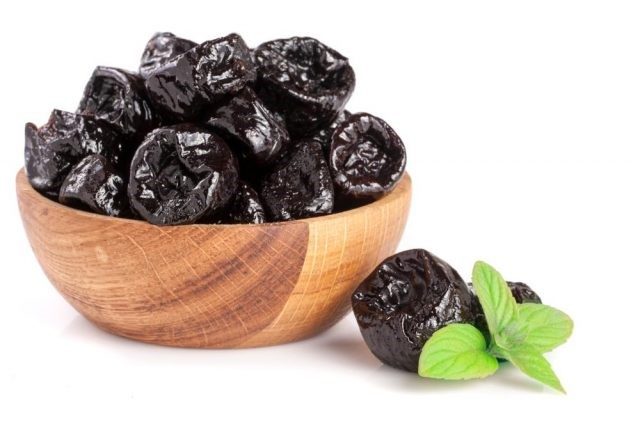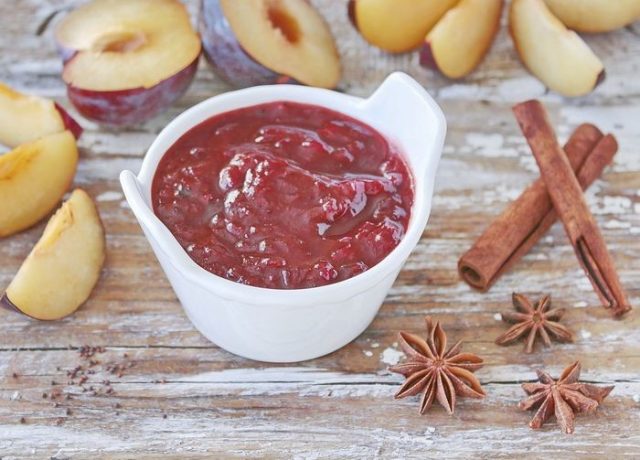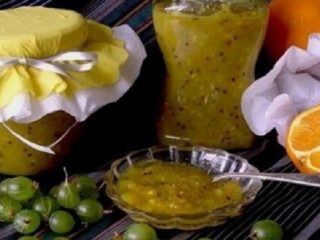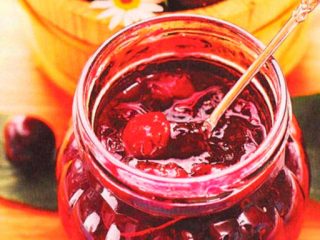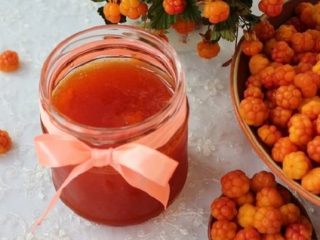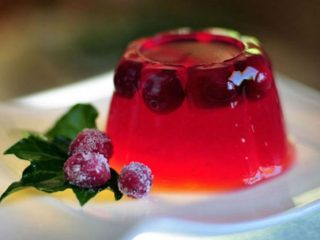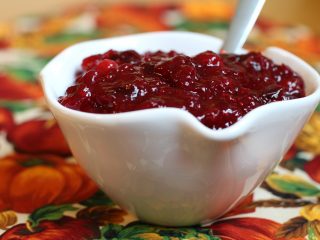Content
Prune jam is not the most common type of preparation for the winter, but the taste of this dessert is usually excellent. At the same time, due to the high percentage of pectin in plums, and, accordingly, their stickiness, the cooking process becomes easier, since it does not require the use of additional ingredients. Another thing that speaks in favor of jam is that eating it can have a beneficial effect on your health, as long as you don’t overdo it with the quantity.
How to make prune jam for the winter correctly
Despite the fact that usually following a recipe allows you to make a high-quality and tasty dish, there are some features and general cooking rules, following which you can improve the taste or simplify the cooking process.
Let's name some rules that should be kept in mind when preparing pitted prune jam for the winter:
- Jars for preparations must be sterilized.
- Before using, it is advisable to soak prunes briefly in boiling water.
- It is better to take prunes with pits and remove them yourself, since small pieces of pits may remain in fruits that are declared seedless. Otherwise, there is a risk of damaging the tooth.
- Recipes indicate the weight of prunes without taking into account the seeds; accordingly, the berries are weighed after removing the cores.
- It is more convenient to take small jars for storage, since jam is usually consumed more slowly than other types of preparations.
- Cooking time is reduced if you do not add water.
- In order for the jam (or preserves) to cook more or less evenly, it is better to cook them not in a high saucepan, but in a basin or any other flat and wide container.
- It is better to add sugar after the fruits have boiled.
- To make jam and not preserves, plums are crushed in any convenient way.
- Before removing the pits, prunes are soaked in boiling water for several minutes.
The process of choosing suitable fruits also has its own nuances. It is worth paying attention to:
- taste – without bitter aftertaste;
- color - it is better to choose fruits that are black rather than brown;
- density - prunes should not be too dry or under-dried; ideally, plums should be elastic and quite dense.
Classic prune jam recipe
Ingredients:
- prunes – 600 g;
- sugar – 200 g;
- settled or boiled water.
Algorithm:
- The prunes are washed, the pits are removed, poured into a saucepan and filled with water so that it covers the fruit by two fingers. That is, 600 g of plum requires about a liter of water.Important! If desired, and for greater viscosity, you can do without water - in this case, prunes are crushed and boiled until softened.
- Boil the fruits until they soften and the water evaporates.
- Grind the boiled berries.
- 100 ml of water is mixed with a glass of sugar and syrup is made.
- Pour the ground berries into the syrup and cook, stirring, for 10–15 minutes.
- Remove from heat and pour into jars.
Prune jam through a meat grinder
You will need the following:
- basin or large saucepan;
- meat grinder;
- 1 kg prunes;
- 1 kg sugar.
Preparation:
- The fruits are passed through a meat grinder, then transferred to a cooking container and sugar is added. Then mix. Alternatively, sugar can be added later, when the jam has already begun to boil down.
- Cook, stirring constantly. After boiling, the heat is increased. The cooking time, after the jam begins to boil, is half an hour.
- Turn off the stove and pour the finished product into sterilized jars.
From the specified amount, approximately a liter of jam is obtained.
Thick prune jam for the winter with pectin
This recipe is for those who love really thick jam. Since plum itself contains a large amount of pectin, which gives the jam its viscosity, an additional dose from the outside means that the final product will be much thicker. This should be taken into account during the cooking process.
Since pectin is a thickener and not an independent ingredient, it is added in moderation towards the end of cooking the jam. For a kilogram of prunes you will need half a packet of apple pectin and a kilogram of sugar.
Thus, the cooking process may look like this.
- The crushed plums are placed in a bowl, put on fire and boiled until they become soft. If you wish, you can add a glass of boiled water in case the jam starts to burn or becomes too thick.
- After the prune puree boils and cooks for about 20 minutes, the pectin is mixed with sugar and poured into a basin.
- Cook for another ten minutes, stirring constantly.
- Remove from heat and quickly pour into jars.
Pectin can be replaced with gelatin if necessary.
How to make spiced prune jam
The spices in the recipe can be replaced with any others to taste. For example, you can add fresh or dried ginger or cardamom.
Ingredients:
- pitted prunes – 1 kg;
- sugar – 1 kg;
- carnation;
- cinnamon - half a teaspoon;
- 3 tablespoons lemon juice or lemon.
Preparation:
- The prunes are scalded with boiling water and the pits are removed if necessary. Then passed through a meat grinder.
- Granulated sugar is poured into the resulting puree, mixed and put on fire.
- After boiling, add spices and pour in or squeeze out lemon juice.
- Reduce heat to low and cook for one and a half hours, stirring and skimming. After thickening, the jam is poured into sterilized jars and sealed.
Recipe for prune jam with chocolate
Ingredients:
- kilogram of prunes;
- 800 g granulated sugar;
- bitter or milk chocolate – 300 g.
Preparation:
- The prunes are halved or cut into small pieces and sprinkled with sugar.
- Leave to infuse for 5–6 hours. It is best to leave overnight as cooking takes a long time.
- Place on medium heat and cook until boiling. Remove the foam with a slotted spoon, remove the boiled jam from the heat and allow to cool for several hours.
- Repeat the procedure.
- Put the jam on the fire for the third time.
- While the plum puree boils for the third time, grate the chocolate or chop it into pieces with a knife.Add to prunes.
- After boiling, cook for another 10–15 minutes, then remove from heat and pour into sterilized jars and seal them.
In some recipes, chocolate is replaced with cocoa powder.
Then the recipe changes as follows.
For a kilogram of prunes you need:
- 300 g granulated sugar;
- 2 tablespoons cocoa powder;
- 80 g butter.
Prepare as follows:
- Grind the prepared prunes in a meat grinder.
- Mix the fruits with sugar and bring to a boil, stirring and removing any foam that appears.
- After boiling, cook for another half hour, pour in cocoa and add butter, stir.
- Cook for 15 minutes.
Rules for storing prune jam
The shelf life of prune jam directly depends on whether it was prepared with seeds or not:
- with seeds – shelf life does not exceed two months;
- seedless - depends on how the preparation was processed, in particular, on the presence or absence of sterilization and rolling up the lids, but not less than three months.
If jars of jam are pre-sterilized and then rolled up, that is, we are talking about storing them for the winter, then the longest period during which the product is usable is 2 years. A dessert left uncovered for the winter can last in the refrigerator for three months.
The product can also be stored at room temperature, as long as the storage location is protected from sunlight. The shelf life does not change - the jam is stored for about two years. In general, it is believed that preserves and preserves can be eaten even if the expiration date has already passed, of course, if mold has not appeared and the smell of the product has not changed.
Conclusion
Prune jam is not a dish that you often see on the dinner table because it usually takes a long time to prepare. However, possible difficulties with following the recipe and the duration of preparation of the ingredients are compensated by the taste of the dessert, as well as the fact that it can be prepared throughout the year, as the need arises. As with many other recipes, the amount and types of spices can be changed according to the taste of the cook.

